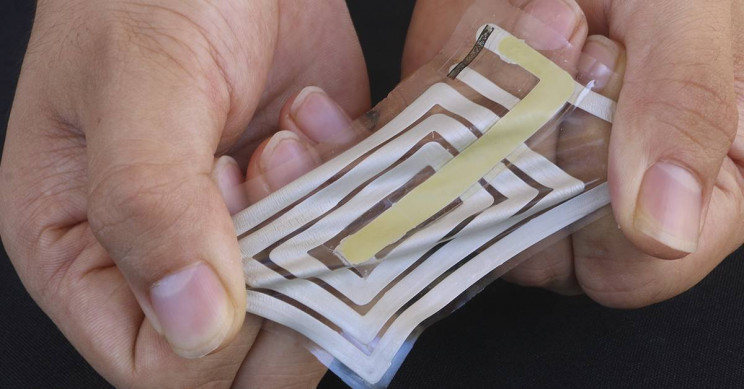You Can Now Track Your Health With These Sticky Sensors
Parvati Misra - Sep 13, 2019

Researchers have engineered a new type of wearable technology called BodyNet that detects physiological signals emanating from the skin.
- Stanford Engineers Modify The N95 Mask To Be More Breathable
- 5 Things You Probably Didn’t Know About Google
- Stanford To Set Up An “Internet Observatory” For Abuse Monitoring
Stanford engineers have come up with a new wearable technology known as BodyNet which can detect physiological signals coming from the skin. The tech is made up of multiple wireless sensors which can transmit data and stick to the skin like band-aids.
This product is the invention of a professor in chemical engineering Zhenan Bao, who has been holding her belief that wearable technology will be widely adopted into the medical field to obtain full-body data.
Bao, who is also the K.K Lee professor, believed that we would one day develop a full-body skin-sensor that would serve to collect body readings without interfering a person’s daily activity.

It took the team three years to fully develop these sensors. With the final aim of developing a wearable technology that would make no difficulties for a person to wear it, and carrying no circuits that could potentially make the stickers unable to stretch with the skin.
The team applied an alteration of the technology known as RFID to achieve the aforementioned. RFID, also known as radiofrequency identification is what allows keyless entry to locked rooms.
Imagine BodyNet stickers as ID cards, when one of these cards is held against an RFID receiver, ID’s antenna card will harvest the energy from the RFID receiver and use the energy to generate a code and beam the code back to the receiver.
To power the BodyNet’s sensors, they installed an antenna on the sticker in order to collect part of the RFID energy from a receiver. The data can then be taken from the skin and transmitted them back to the receiver nearby.
However, this posed a problem as the team of researchers would need a unique antenna that can bend and stretch along with the skin.
To deal with this problem, metallic ink was screen-printed on a rubber sticker. This method, however, had a drawback that when the antenna was stretched or bent, those movements would weaken the signal, making it too unstable to use.
Researchers from Stanford eventually found a way to work around this obstacle. A new variation of RFID has been developed that can transmit strong and precise signals back to the receiver even in an environment of nonstop fluctuations. The receiver which was powered by battery can later upload data periodically via Bluetooth from the sticker to a handset, computer or another storage system, according to Stanford’s press release.
BodyNet can now transmit pulse and respiratory data, however, the team has high hopes to further improve the technology, which is to integrate temperature, sweat along with other sensors into their current antenna systems.
Featured Stories

Features - Jul 01, 2025
What Are The Fastest Passenger Vehicles Ever Created?

Features - Jun 25, 2025
Japan Hydrogen Breakthrough: Scientists Crack the Clean Energy Code with...

ICT News - Jun 25, 2025
AI Intimidation Tactics: CEOs Turn Flawed Technology Into Employee Fear Machine

Review - Jun 25, 2025
Windows 11 Problems: Is Microsoft's "Best" OS Actually Getting Worse?

Features - Jun 22, 2025
Telegram Founder Pavel Durov Plans to Split $14 Billion Fortune Among 106 Children

ICT News - Jun 22, 2025
Neuralink Telepathy Chip Enables Quadriplegic Rob Greiner to Control Games with...

Features - Jun 21, 2025
This Over $100 Bottle Has Nothing But Fresh Air Inside

Features - Jun 18, 2025
Best Mobile VPN Apps for Gaming 2025: Complete Guide

Features - Jun 18, 2025
A Math Formula Tells Us How Long Everything Will Live

Features - Jun 16, 2025
Comments
Sort by Newest | Popular